Rachael Beesley & Nicole van Bruggen | Co-Directors
Welcome to the Australian Romantic & Classical Orchestra’s Educational Resources page. Permission to use material must be expressly sought from the author/publisher.
HISTORICALLY INFORMED PERFORMANCE GUIDE
HIP. Be curious, be passionate, be nerdy!!
What are we trying to achieve?
Our goal is to form a notion of style and guidelines for achieving ‘good taste’.
How are we to achieve it?
Philosophical questions - affections & rhetoric!
Technical questions - articulation, embellishment, ornamentation, improvisation, instrument and vocal technique, continuo, tempo, rhythm, phrasing, dynamics, pitch, temperament, vibrato and other expressive devices and instrumental technique.
On what evidence do we work?
Primary and Secondary Source Material - scores, treatises, documents, iconography and early recordings.
Why study historical performance?
CREATE new learning and career opportunities by performing, studying and experiencing the world of music from the Classical & Romantic periods.
LEARN the performance techniques and skills required for playing repertoire from the Classical & Romantic periods with an historical perspective including ornamentation, improvisation, articulation, tempi, rhythmic freedom, key characteristics and functional harmony.
EXPLORE the world of period instruments and the instrumental and vocal treatises and related treatises.
DEVELOP a thorough knowledge, understanding and fluency of the musical styles, techniques and repertoire from the Classical & Romantic periods.
ENHANCE understanding and awareness of historically informed performance practice and the skills required for professional musicians of the 21st century.
TABLE OF CONTENTS
Reading Lists
PRIMARY SOURCES
Bach, Carl Philipp Emanuel: Essay on the True Art of Playing Keyboard Instruments
Baillot, Pierre: The Art of the Violin
Bremner, Robert: Some Thoughts on the Performance of Concert Music (1777)
Clinton, John: Treatise Upon the Mechanism and General Principals of the Flute (1851)
Corri, Domenico: The Singer’s Preceptor (1810)
David, Ferdinand: Violinschule (1863)
De Bériot, Charles-Auguste: Méthode de Violin (1858)
Delusse, Charles: L'art de la flute traversiere (1760)
Fröhlich,Franz Joseph: Vollständige theoretisch- pracktische Musikschule
(1811)
García, Manuel: A complete treatise on the art of singing (1856)
Geminiani, Francesco: A Treatise of Good Taste in the Art of Musick
Geminiani, Francesco: The Art of Playing on the Violin (1751)
Hotteterre, Jacques: Principes de la flute traversiere, de la Flute a Bec, et du
Haut-bois (1707)
Moyse, Marcel: On Sonority – Art & Technique (1934)
Mozart, Leopold: A Treatise on the Fundamental Principles of Violin Playing
Muffat, Georg: On Performance Practice
Nicholson, Charles: A School for the Flute (1836)
Quantz, Johann Joachim: On Playing the Flute
Spohr, Louis: Violin School (1832)
SECONDARY SOURCES
Boyden, David: The History of Violin Playing from its Origins to 1761
Brown, Clive: Classical and Romantic Performance Practice 1750-1900
Burton, Anthony (ed.) - ABRSM: A Performer's Guide to Music from the Classical Period
Burton, A. (ed.) - ABRSM: A Performer's Guide to Music from the Romantic Period
Butt, John: Playing with History
Davies, Fanny: 'Some Personal Recollections of Brahms as Pianist and Interpreter,' Cobbett's Cyclopedic Survey of Chamber Music
Donington, Robert: Baroque Music Style and Performance A Handbook
Donington, R.: The Interpretation of Early Music
Duffin, Ross: How Equal Temperament Ruined Harmony (and Why You Should Care)
Fisenden, Owen: Formula for Fluting: A Daily Schedule of Exercises for the Flautist
Gaines, James R.: Evening in the Palace of Reason (Bach Meets Frederick The Great)
Greco, David: 19th Century Expressive Performance Practice found from Singers on the Early Gramophone
Harnoncourt, Nikolaus: Baroque Music Today: Music As Speech
Haynes, Bruce: The End of Early Music
Haynes, B.: A History of Performing Pitch, The Story of “A”
Haynes, B. Burgess, G: The Pathetick Musician
Hill, Aaron: An essay on the art of acting
Holman, Peter: Four and Twenty Fiddlers
Kim, David: CD Tracks for “The Brahmsian Hairpin” in 19th-Century Music
Lawson, Colin and Stowell, Robin: The Historical Performance of Music
Little, Meredith and Jenne, Natalie: Dance and the Music of J. S. Bach
Milsom, David: Classical and Romantic Music
Milsom, D.: Romantic Violin Performing Practices: A Handbook
Pauer, Ernst: The Elements Of The Beautiful In Music
Peres Da Costa, Neal: Off the Record Performing Practices in Romantic Piano Playing
Philip, Robert: Performing Music in the Age of Recording
Philip, R.: Early Recordings and Musical Style
Sadie, Stanley: The New Grove Dictionary of Music and Musicians
Stowell, Robin: The Cambridge Companion to the Violin
Stowell, R.: The Early Violin and Viola A Practical Guide
Stowell, R.: Violin Technique and Performance Practice in the Late Eighteenth and Early Nineteenth Centuries
Tarling, Judy: Baroque String Playing for Ingenious Learners
Tarling, J.: The Weapons of Rhetoric
Williams, Emma: “The Singing Violin: Portamento use in Franz Schubert’s Violin Music”


